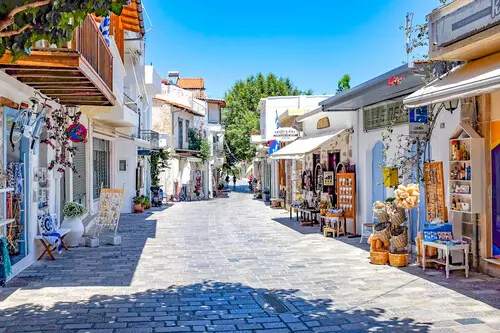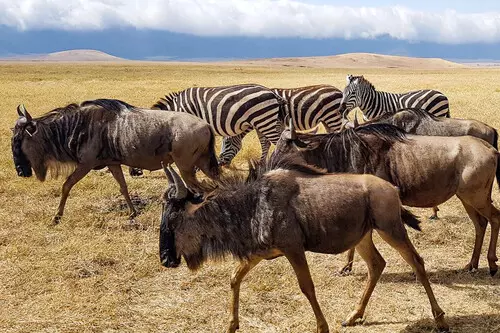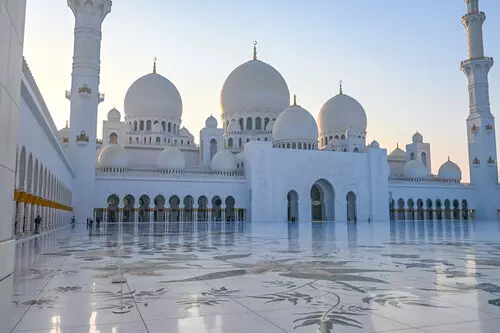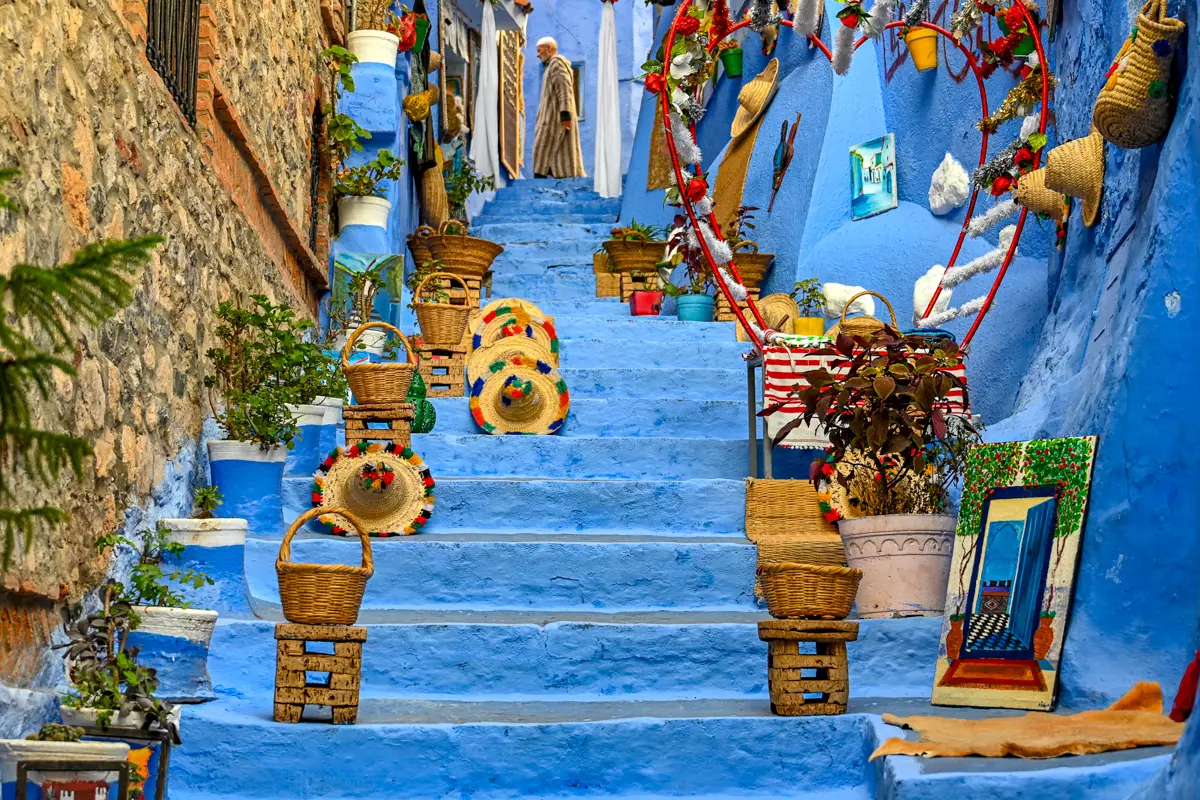Best Time To Visit Morocco By Month + Tips
Planning a trip to Morocco but not sure when the best time to visit is? From the lively souks of Marrakech to the golden Sahara dunes and snowy Atlas peaks, Morocco is a country of contrast—and the season you choose can completely shape your experience.
The climate shifts wildly between coast, desert, and mountains. Spring is known for its bloom and mild days, while autumn gave me warmth without the crowds. Even in November, I was surprised how sunny and dry it was across the country.
In this guide, you’ll find a month-by-month breakdown of Morocco’s weather, festivals, local tips, and practical insights—drawn from personal experience and over a decade of global travel.
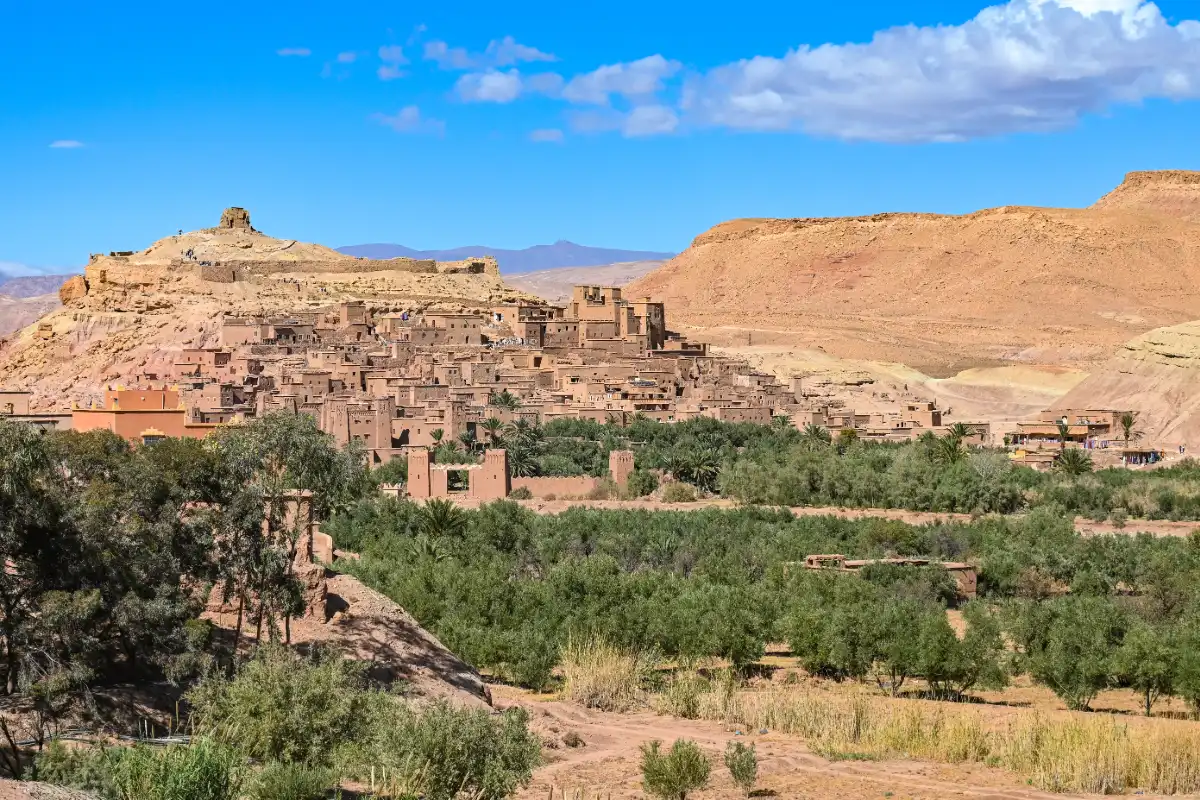
Morocco Weather & Events by Month
Not sure which month suits your Morocco trip best? Here’s a quick breakdown to help you match your travel style with the right season.
| Travel Goal | Best Time to Go | Why? |
|---|---|---|
| 🌞 Warm & pleasant weather | March – May, October | Mild temps, green views, ideal for sightseeing |
| 🧘 Fewer crowds / peaceful | November – February | Low season, quiet, ideal for slow cultural travel |
| 🏜️ Desert trips | Mar – May, Sept – Nov | Warm days, cool nights, ideal for Sahara tours |
| 🎉 Cultural festivals | Jan, Feb, Mar, May, Jun, Oct | Music, dance, and seasonal traditions |
| 💸 Budget-friendly | Jan, Feb, June | Lower prices, mild weather—best near the coast |
| 🏞️ Active travel / hiking | Mar – May, Sep – Oct | Top months for trekking & adventure |
| 🏄 Coastal escape | June – September | Great for surfing & beach time in Essaouira, Agadir |
Morocco In January: Crisp Air, Quiet Streets & Snowy Peaks
January is the heart of Moroccan winter—cool, calm, and full of contrast. In cities like Marrakech and Fes, days are sunny but fresh, averaging around 18°C, while nights can dip to 6°C or lower. Up in the High Atlas Mountains, snow blankets the peaks, creating postcard-perfect views and even opportunities to ski at Oukaïmeden.
This is one of the quietest months to visit, with fewer tourists and lower prices across the board. It’s a great time for those who prefer slower travel, enjoy cultural depth, and don’t mind packing a few extra layers.
Local Tip: Bring warm clothing, especially for the evenings. Traditional riads often have limited heating, and tiled interiors can feel colder than the air outside.
Cultural Highlight: Amazigh New Year (Yennayer)
On January 12th, Berber communities across Morocco celebrate Yennayer, the Amazigh New Year. Expect local feasts, storytelling, music, and symbolic rituals tied to the land and harvest.
Tip: If you’re staying near the Atlas region or in southern villages, ask your host about local Yennayer celebrations—some guesthouses organize special dinners.
Morocco In February: Desert Sun & Cultural Roots
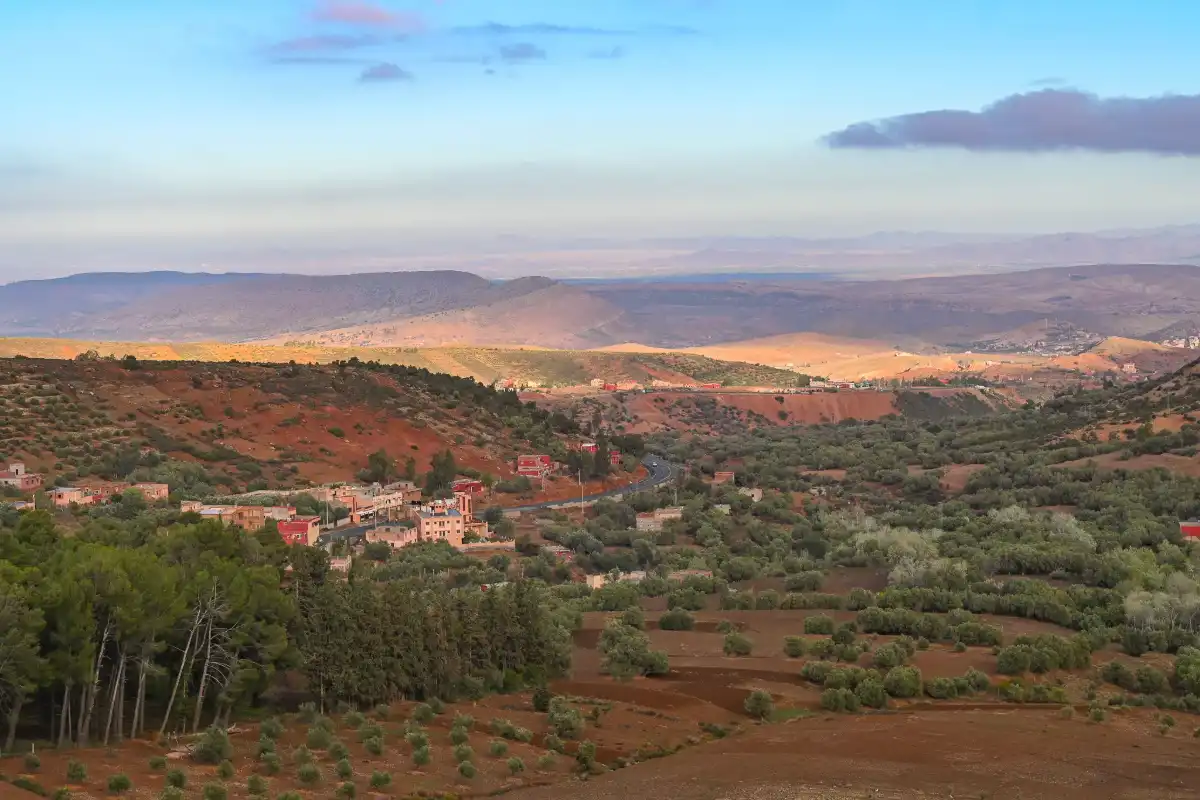
February continues Morocco’s cool and quiet winter season, but with a slight shift. Days become longer, almond trees start to bloom, and southern regions like the Sahara begin to warm up. Average daytime temperatures range from 19–22°C in cities, while late evenings still call for a jacket.
This is a lovely month for cultural travel and off-the-beaten-path adventures. In rural areas, especially around the Anti-Atlas, early spring flowers dot the hills, and in Tafraoute, locals celebrate the vibrant Almond Blossom Festival.
Local Tip: Late February can be a good time to visit the desert. Days are usually sunny and mild—perfect for camel rides and evenings around the fire under starry skies.
Cultural Highlight: Almond Blossom Festival, Tafraoute
Each February, the small town of Tafraoute in the Anti-Atlas mountains becomes a hub of local life as almond trees explode in white and pink bloom. The festival includes folk music, traditional dance, and Berber arts and crafts.
Tip: Book accommodation early if you’re heading to Tafraoute—the town is small and fills up quickly during festival week.
Morocco In March: Softer Skies & Mountain Trails
March marks the start of Morocco’s spring awakening. The days grow warmer, flowers begin to bloom in valleys and hillsides, and the countryside turns lush and green. In cities like Marrakech, daytime temperatures hover around 22–24°C, while the mountains remain cooler—ideal for hiking without the summer heat.
This is a fantastic month for nature lovers and cultural explorers alike. With clear skies, moderate weather, and fewer crowds than in April or May, March is the perfect in-between moment before the tourist season ramps up.
Local Tip: March is one of the best months to explore the High Atlas Mountains. Trails are open and scenic, especially around Imlil and the foothills of Mount Toubkal. To make the most of it, start early to catch the best light—and avoid midday sun at lower elevations.
Cultural Highlight: Nomads Festival, M’Hamid El Ghizlane
This unique festival brings together nomadic communities, artists, and musicians from across the Sahara and beyond. It’s held in the gateway village to the desert and celebrates freedom, oral tradition, and cross-cultural exchange.
Tip: Even outside the festival, M’Hamid has a great vibe in March—many desert camps offer music nights and small glimpses into local traditions.
Morocco In April: Blooming Landscapes & Balanced Days
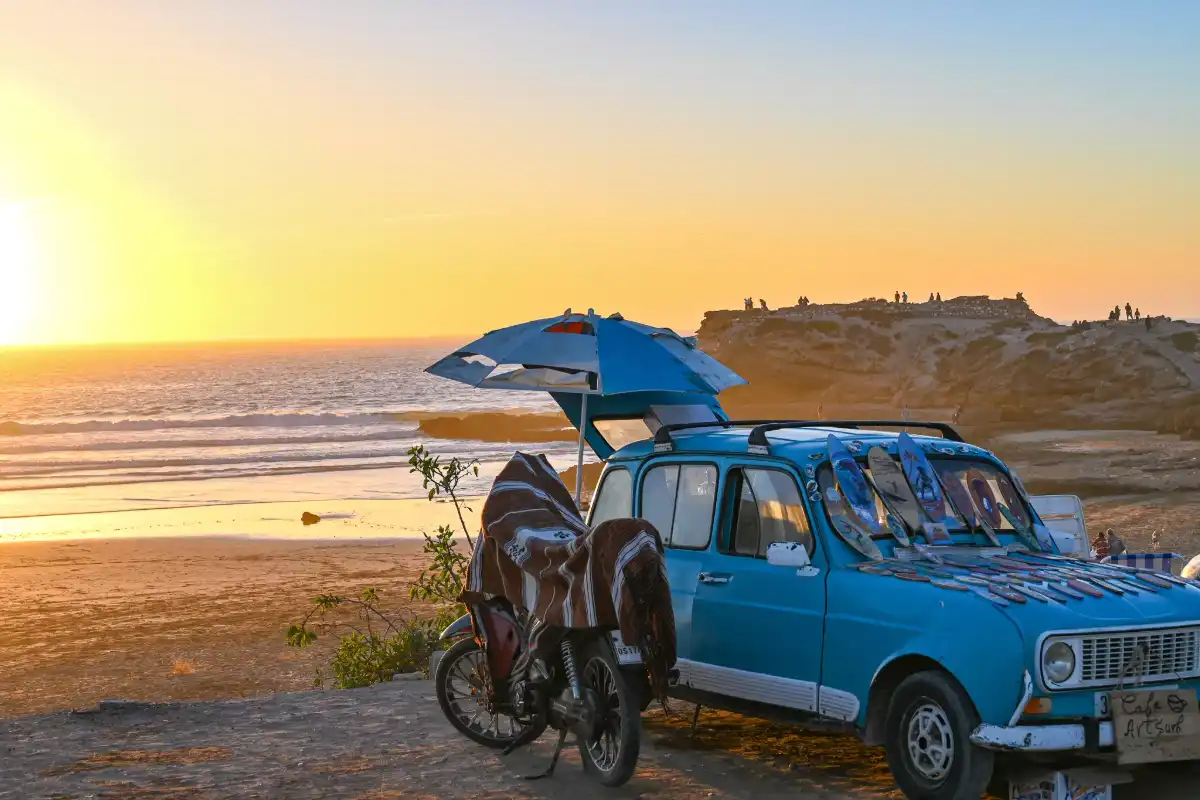
April is when Morocco truly comes alive. Temperatures are comfortably warm—averaging 23–25°C in major cities—and the landscape is in full bloom. Valleys are green, gardens are fragrant, and rural roads wind through fields of wildflowers and orchards in blossom. The weather is stable and dry in most regions, making it an ideal time for both sightseeing and adventure.
Local Tip: Rent a car and explore beyond the usual trail. Spring is perfect for scenic drives—try the road from Marrakech to Ourika Valley or head into the Middle Atlas for cedar forests and peaceful lakes. You’ll experience Morocco’s natural beauty at its absolute best.
Cultural Highlight: Ramadan (dates vary)
Depending on the lunar calendar, Ramadan may still be ongoing in early April. During this sacred month, Muslims fast from sunrise to sunset. While things slow down during the day, evenings feel magical—streets fill with the smell of food, families gather, and the whole country glows with warmth and togetherness.
Tip: Respect local customs—avoid eating or drinking in public during the day. If you’re invited to an iftar (evening meal), say yes. It’s a heartwarming, generous moment you won’t forget.
Morocco In May: Sunshine, Roses & Outdoor Adventures
May is considered the best time to visit Morocco. The weather is warm but not overbearing—around 26–28°C in Marrakech and slightly cooler in the mountains and coastal towns. The skies are reliably blue, nature is still lush from spring rains.
This is the perfect time for active travelers. You can hike, road trip, relax by the beach, or wander the medinas in comfort. Whether you’re sipping mint tea in a rooftop cafe or walking through a remote Berber village, May feels made for exploring.
Local Tip: Don’t miss the Dades and Todra Gorges in May. The deep red cliffs, dramatic canyons, and riverside oases are stunning this time of year. And to really enjoy it all, bring good shoes—there are easy walks with stunning views popping up around every twist in the path.
Cultural Highlight: Rose Festival, El Kelaa M’Gouna
Each May, the Valley of Roses bursts into celebration as the annual harvest begins. The festival includes parades, traditional dancing, markets, and handmade beauty products made from local Damascus roses.
Tip: If you go, arrive early in the day—the small town gets lively fast. And be sure to pick up some locally made rose water or essential oil. It’s one of the region’s signature souvenirs.
Morocco In June: Early Summer Calm & Coastal Escape
June in Morocco brings the first signs of real summer, but without the extremes of July or August. Temperatures in Marrakech and other inland cities typically rise to around 30°C, occasionally higher.
This is a great month for variety—hot enough for the beach, dry enough for desert travel, and long, sunny days that stretch well into the evening. It’s also just before peak season, so you’ll find a nice balance of vibrant energy and breathing room.
Local Tip: Essaouira is a perfect June escape. With whitewashed walls, ocean winds, and a laid-back vibe, it offers a cooler, bohemian contrast to the heat further inland. It’s also a favorite for surfers and artists—don’t skip the galleries or the daily fish market at the port.
Cultural Highlight: Gnaoua World Music Festival, Essaouira
Usually held in late June, the Gnaoua World Music Festival brings together musicians from Morocco and around the world. Rooted in traditional Gnaoua rhythms, the event blends jazz, blues, funk, and tribal sounds in one unforgettable coastal celebration.
Tip: If you plan to attend, book your riad early—Essaouira fills up quickly. Even if you miss the official dates, the town often hosts free outdoor performances all month long.
Morocco In July: Desert Heat & Coastal Breezes
July is the height of summer in Morocco—and it shows. Inland cities like Marrakech, Fes, and Ouarzazate often reach 40°C or more during the day, while nights stay warm and dry. But on the coast, temperatures remain pleasant, with Essaouira, Rabat, and Tangier offering daytime highs around 26–28°C and refreshing ocean winds.
If you’re visiting in July, plan your days carefully. It’s the month for early morning walks, late-night markets, and midday siestas in the shade. Coastal getaways, mountain retreats, and laid-back hammam visits are all great ways to stay cool and culturally connected.
Local Tip: Avoid walking around the cities between noon and 4 p.m.—the heat gets intense. Instead, use that time to relax in a riad courtyard, visit a shaded museum, or enjoy a long Moroccan lunch.
Cultural Highlight: Throne Day (July 30)
Throne Day celebrates the anniversary of King Mohammed VI’s ascension to the throne. Expect flags on every building, fireworks in major cities, and a festive air throughout the country. While not a tourist-focused event, it’s a meaningful national holiday.
Tip: If you’re in a city like Casablanca or Rabat during Throne Day, look out for public gatherings and fireworks displays in the evening. It’s a patriotic, peaceful, and family-friendly celebration.
Also read: Best Things To Do In Agadir, Morocco
Morocco In August: Summer Heat & Local Rhythm
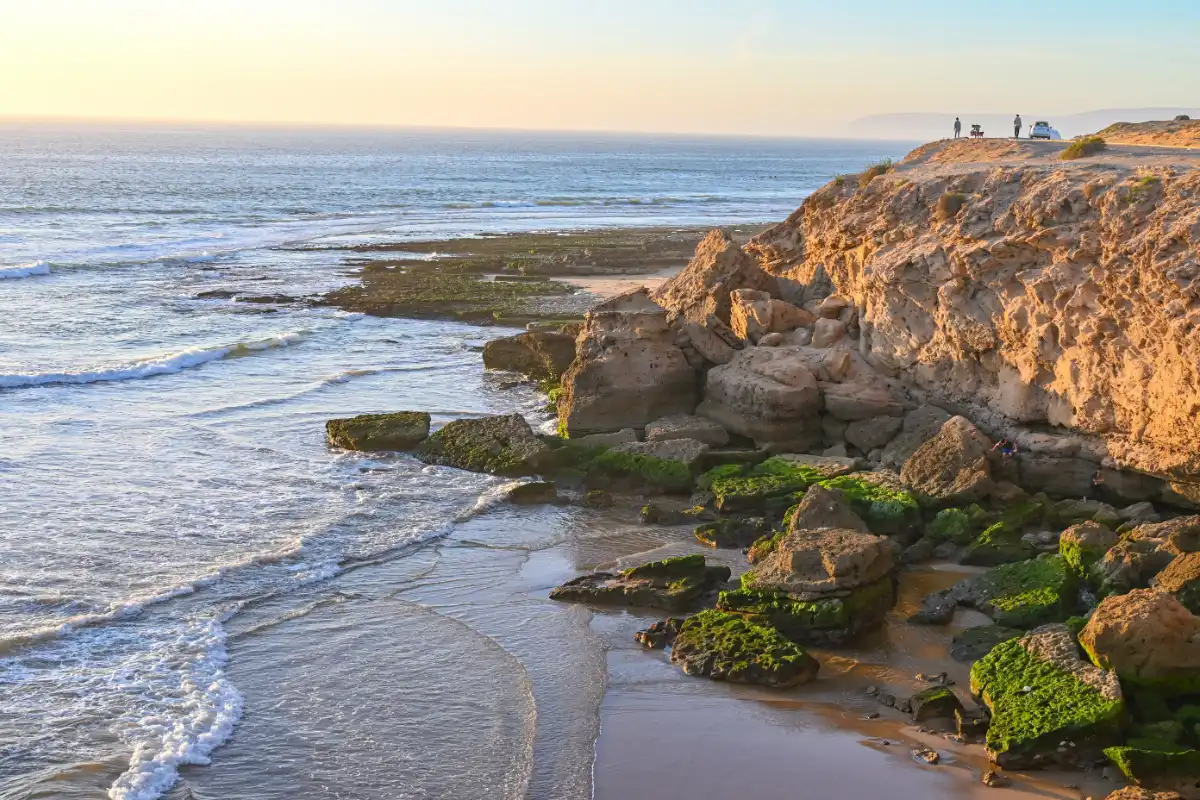
August is one of the hottest months in Morocco, especially inland. Cities like Fes, Marrakech, and Merzouga can easily surpass 40°C during the day. But it’s also the heart of Moroccan summer life—late nights, rooftop gatherings, and a slow, grounded rhythm shaped by the heat.
Coastal towns like Asilah, El Jadida, and Agadir become go-to escapes, with cooler air, swimmable seas, and a more relaxed vibe. August is also when many locals take holidays, so the atmosphere shifts from daily hustle to warm, social leisure.
Local Tip: Head to the coast or the mountains. Asilah on the Atlantic coast is a hidden gem in August—artsy, breezy, and full of character. Or venture to the cool cedar forests of Ifrane and Azrou for a complete change of scenery.
Cultural Highlight: Moussem of Moulay Idriss Zerhoun
This annual pilgrimage honors Moulay Idriss I, Morocco’s most revered saint. Thousands gather in the holy town of Moulay Idriss Zerhoun near Meknes for prayer, music, and celebration.
Tip: Non-Muslims can’t enter the mausoleum, but the surrounding town is welcoming. To catch the best of it, visit in the early evening to experience the energy, lights, and local food stands that pop up during the festival.
Morocco In September: Golden Light & Travel Sweet Spot
September marks the beginning of Morocco’s travel sweet spot. Summer’s intensity fades, but the days remain long and warm—perfect for exploring. Temperatures drop to a more manageable 28–30°C inland, while coastal and mountain regions stay comfortably mild.
This is a golden month for nearly everything: city breaks, Atlas hikes, road trips through the south, or just lounging by the sea. Crowds are thinner than in peak summer, but the atmosphere remains lively, especially in places like Chefchaouen, Essaouira, and the Dades Valley.
Local Tip: September is ideal for a road trip. Start in Casablanca or Rabat, loop through Fes and the Atlas Mountains, and end in Marrakech. The roads are dry, the views spectacular, and the temperature just right for long drives and spontaneous stops.
Cultural Highlight: Moussem of Sidi Abdellah ben Hassoun
This spiritual festival combines religious tradition with maritime rituals, including a colorful boat procession honoring the local saint. Held in Salé (next to Rabat), it’s one of the most unique and atmospheric festivals in the country.
Tip: Visit during the late afternoon to catch the procession along the Bou Regreg River. It’s a moment worth witnessing— an incredible blend of devotion, folklore, and local pride, rarely mentioned in mainstream travel guides.
Morocco In October: Soft Sun, Clear Skies & Cultural Glow
October is a golden window for travel in Morocco. Temperatures ease into the low-to-mid 20s°C, skies are consistently clear, and the summer haze gives way to sharp autumn light—ideal for photography, long walks, and cultural immersion.
As a result, this is peak comfort season across the country. From exploring the medinas of Fes to hiking the valleys near Imlil or relaxing on the beaches of Taghazout, everything just feels easier in October. You’ll find locals in their rhythm, harvests underway, and landscapes glowing in late-season warmth.
Local Tip: October is perfect for visiting the palm oases and kasbahs of southern Morocco—like Skoura, Ait Benhaddou, or the Draa Valley. This time of year, the light is incredible for photos, and temperatures are ideal for exploring traditional mudbrick architecture and palm groves on foot.
Cultural Highlight: Date Festival, Erfoud
Held in the desert town of Erfoud, this festival celebrates the date harvest with market stalls, music, parades, and exhibitions of Saharan culture. It’s an authentic celebration of oasis life at the edge of the Sahara.
Tip: Bring cash and buy directly from local growers—you’ll get the freshest dates and a chance to support small producers. Medjool and Bou Feggous varieties are among the finest.
Morocco In November: Quieter Roads & Gentle Warmth
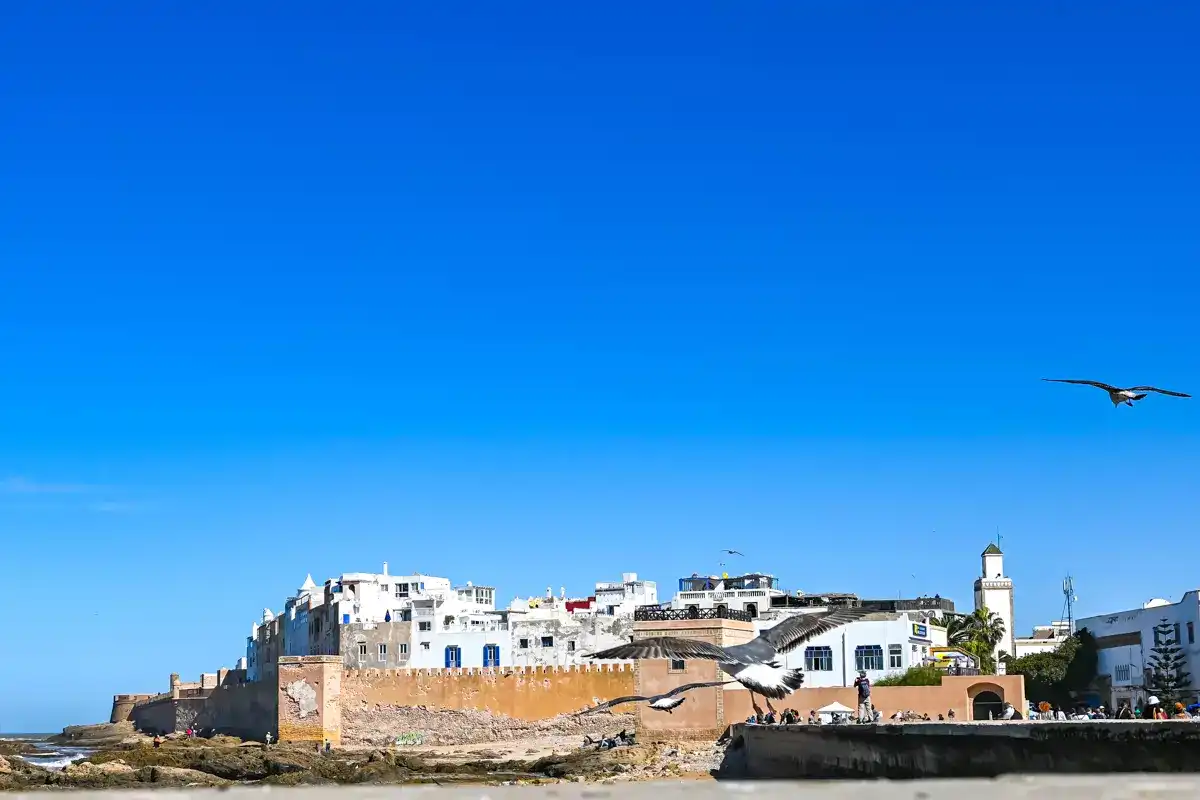
November brings a peaceful transition into Morocco’s mild winter. Inland temperatures settle between 20–24°C during the day, while evenings start to cool—ideal for cozy riads, rooftop dinners, and slow cultural travel. Rain becomes more likely in the north, especially around Tangier and Chefchaouen, but the south remains dry and welcoming.
Crowds thin out noticeably in November, making this a great month for those seeking tranquility. It’s also a surprisingly good time for desert trips, as the days are warm and bright, and the nights crisp enough for campfires under a star-filled sky.
Local Tip: Try a Sahara trip from Merzouga or M’Hamid during this time—the dunes are quiet, the sun isn’t harsh, and you’ll often have entire views to yourself. To make it even more special, choose a camp that includes traditional music in the evening—it’s not touristy in November, it’s just magic.
Cultural Highlight: Independence Day (November 18)
A national holiday marking Morocco’s independence from France in 1956. Celebrated across the country with flags, public speeches, and community events, especially in Rabat and smaller towns.
Tip: While it’s not a party-focused celebration, visiting museums or local exhibits on this day gives a deeper sense of Moroccan history and national identity.
My experience: “I visited Morocco in November and travelled through Marrakech, Agadir, Fes, and Chefchaouen. The weather was consistently sunny throughout my trip, and I didn’t experience a single drop of rain. Agadir had strong sun and clear skies nearly every day—perfect for spending time outdoors. In Fes and Chefchaouen, it felt slightly cooler, especially in the mornings and evenings, but still very comfortable.
What stood out most was how stable and enjoyable the weather was across such different parts of the country. Even during my visit to Paradise Valley, the conditions were great—sunny, warm, and the pools were full enough for swimming and cliff jumping. Overall, November felt like a great time to travel: fewer crowds, perfect light, and just the right balance between heat and freshness.”
Also read: Paradise Valley Agadir: Full Travel Guide
Morocco In December: Winter Sun & Festive Serenity
December in Morocco offers a unique blend of winter calm and soft adventure. In cities like Marrakech and Agadir, days stay pleasantly warm—between 18°C and 21°C, depending on the region. In the north and mountain regions, cooler temperatures and occasional rain bring a peaceful stillness. Meanwhile, the desert becomes a refuge for winter sun seekers.
It’s not a classic “holiday season” destination, but that’s what makes it special. December is all about slower travel, quiet evenings by the fire, and immersive moments—without the pressure of crowds or high-season prices.
Local Tip: Head south if you’re chasing warmth—Agadir, Taroudant, and even Dakhla offer bright, sunny days and beautiful Atlantic beaches with very few tourists. On the other hand, if you’re in the mountains, pack a jacket—there may be snow in the High Atlas.
Cultural Highlight: Christmas & New Year’s Eve
While Morocco doesn’t celebrate Christmas as a national holiday, major tourist destinations like Marrakech, Casablanca, and coastal resorts often host festive dinners, lights, and events for visitors.
Tip: If you’ll be in a bigger city, book your New Year’s Eve dinner early—many riads and hotels host small gatherings with traditional food and music. Rather than big crowds or fireworks, expect a relaxed, candlelit celebration.
Also read: Things To Do In Morocco: Must-See Places
Morocco Climate Breakdown By Month
Average Temperature
For current conditions and seasonal climate data, see AccuWeather.
FAQs About The Best Months To Visit Morocco
It depends on where you go. Inland cities like Marrakech and Fes can reach over 40°C in July and August, making midday sightseeing challenging. However, coastal towns such as Essaouira and Tangier stay much cooler thanks to ocean breezes.
September to November and March to May are considered the most pleasant times to visit. During these months, you can enjoy mild temperatures, little rainfall, and ideal conditions for exploring cities, enjoying desert adventures, and experiencing cultural festivals.
Yes—November is one of the most comfortable months for travel. As I mentioned earlier, I visited Morocco then myself and can confirm: it was sunny, peaceful, and not a drop of rain the whole time.
Rain is generally rare, especially outside of the November–March window. The north of Morocco sees the most rainfall, but southern and inland regions remain mostly dry year-round.
Yes, you can visit the Sahara in winter, but be prepared for cold nights. Daytime temperatures are usually mild and sunny, making it comfortable for touring, while nighttime temperatures can drop close to freezing. Pack warm layers if you’re planning an overnight stay.
In spring and autumn: light layers, comfortable shoes, a jacket for the evenings. In summer: breathable clothing, sun protection, and a hat. In winter: warmer layers for evenings, especially in the mountains or desert.
Book your flight
For the best flight deals, I always rely on Skyscanner. Features like Multi-city and Explore Everywhere help me uncover incredible travel opportunities.
Rent a car
Discovercars is my top choice for comparing car rental prices for any road trip around the world. The booking experience is always smooth and easy.
Travel insurance
SafetyWing provides affordable travel medical insurance with global coverage, perfect for digital nomads and long-term travelers.
Book Tours & Attractions
Experiencing a destination to the fullest is easier with a well-planned itinerary. I use GetYourGuide for guided tours and Tiqets for quick access to museum and amusement park tickets.
Protect yourself online by VPN
No matter where I go, I always use NordVPN for secure browsing and to ensure I can access websites that might be blocked in certain countries.
Disclosure: I only suggest companies that I personally rely on. If you use the affiliate links in my posts to book services, I’ll earn a small commission, with no extra cost to you.
It was a guide to the best time to visit Morocco. Which month will you choose? Share in the comments!
Share on

Evelina
Hi, I’m Evelina, a travel enthusiast who loves nature, peace, and authentic places. I cherish the freedom to explore and learn with each adventure, whether it’s hiking trails, stunning beaches, natural parks, unique architecture, or rich cultural heritage. I hope my experiences inspire you to embark on your own journeys!
